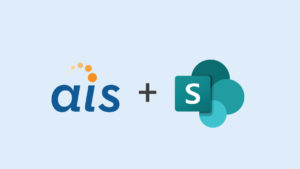 This week, many AIS team members are attending the Microsoft SharePoint Conference in Las Vegas, Nevada. We’ll be posting blog posts from each of them as they learn what’s new and what’s exciting during sessions, demonstrations and other conference highlights.
This week, many AIS team members are attending the Microsoft SharePoint Conference in Las Vegas, Nevada. We’ll be posting blog posts from each of them as they learn what’s new and what’s exciting during sessions, demonstrations and other conference highlights.
We’re out at the SharePoint Conference 2012 this week and learning a ton about the new features of SharePoint 2013. One of particular interest to the IT pros should be the introduction of PowerShell 3.0. There are a number of new features available in PowerShell 3.0 not to mention the cmdlets!
What’s New
New for SharePoint 2013, we now have access to PowerShell 3.0 and the .NET Framework 4.0. PowerShell Web Access is a welcome enhancement to the stack and the addition of workflow opens up a world of possibities for managing your SharePoint farms in an automated manner. And finally, we have updatable help files!
And that’s just the PowerShell side. For SharePoint itself, we have access to 300+ new cmdlets, while 30 have been removed (mostly related to search). And don’t forget, you still need to run those Management Shells as an Administrator.
Permissions Management
The management of permissions in SharePoint 2013 is more forgiving and still managed with the same cmdlets you leveraged in SharePoint 2010; including Get-SPShellAdmin and Add-SPShellAdmin.
Site Collection Upgrades
Several new cmdlets have been added to aid in the upgrade of your existing site collections after they’re mounted in your SharePoint 2013 farm. We can now check the health and state of a site collection upgrade using the Test-SPSite and Repair-SPSite cmdlets.
On the upgrade side, you can bring your existing SharePoint 2010 site collections over to SharePoint 2013 in “Compatibility Mode” which will keep your content intact with 2010 functionality, but in a 2013 farm. First, we can request an evaluation copy of a site collection to test an upgrade with the Request-SPUpgradeEvaluationSite cmdlet.
After we’re happy with the results, we can upgrade our site collections with the Upgrade-SPSite cmdlet (making sure you leverage the -VersionUpgrade switch to commit the upgrade). While your upgrade is running, you can check the status of your upgrade for a Content Database or a Site Collection with the Get-SPSiteUpgradeSessionInfo cmdlet.
Copying Site Collections
Yes, with SharePoint 2013 we can now create full copies of a site collection in an existing or new Content Database by leveraging the Copy-SPSite cmdlet.
User Licensing
Yes, please! We can now manage user licensing in SharePoint 2013. This means we can “mix and match” Standard and Enterprise functionality and prevent users who don’t need features available in the Enterprise SKU from accessing them.
Wrapping Up
There are a number of new enhancements to the existing cmdlets in addition to the 300+ new cmdlets available in SharePoint 2013. If you’d like to see what is available in an interactive manner, you can use the new Windows PowerShell for SharePoint 2013 Command Builder.






